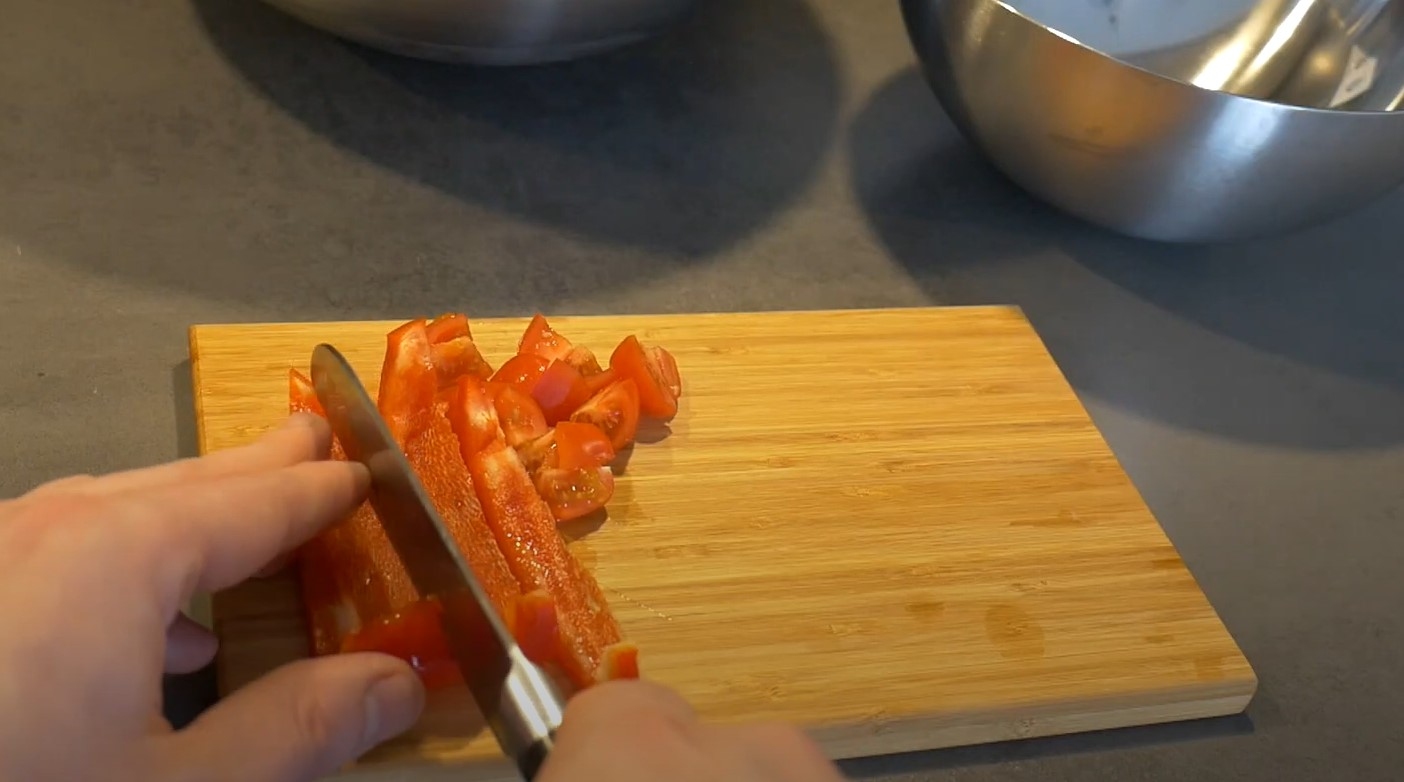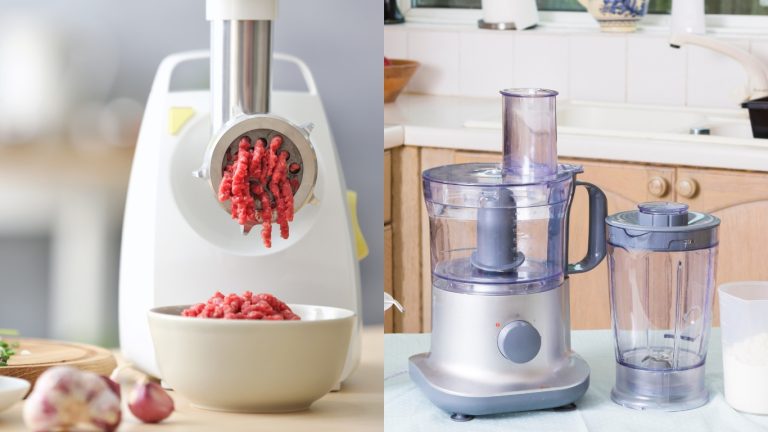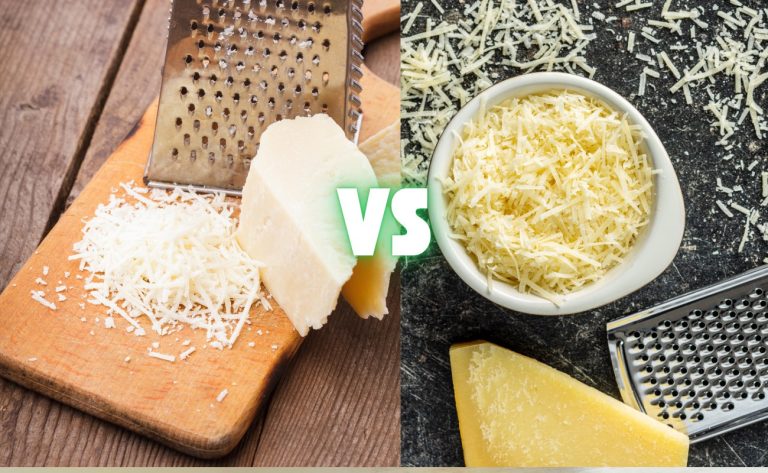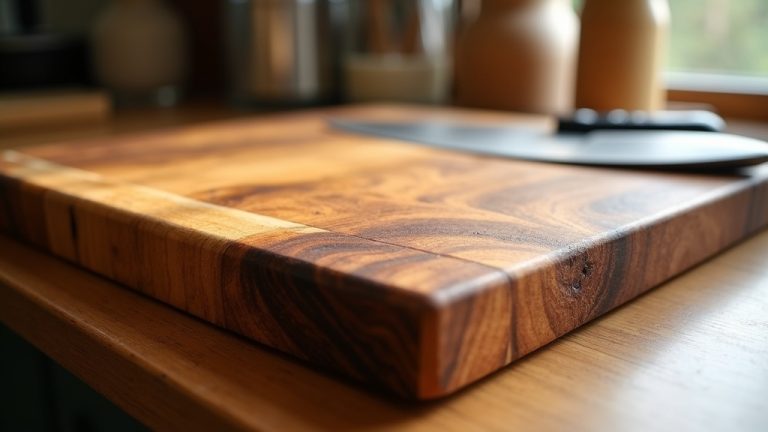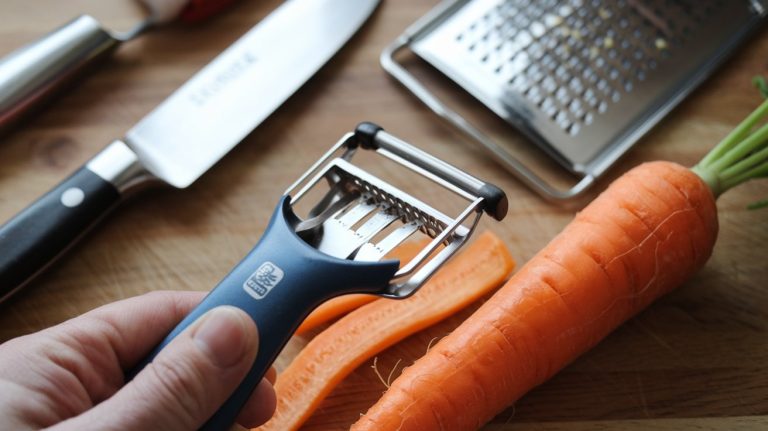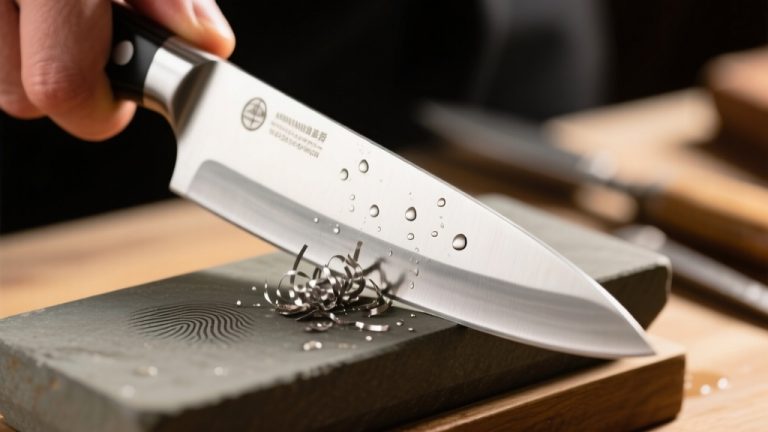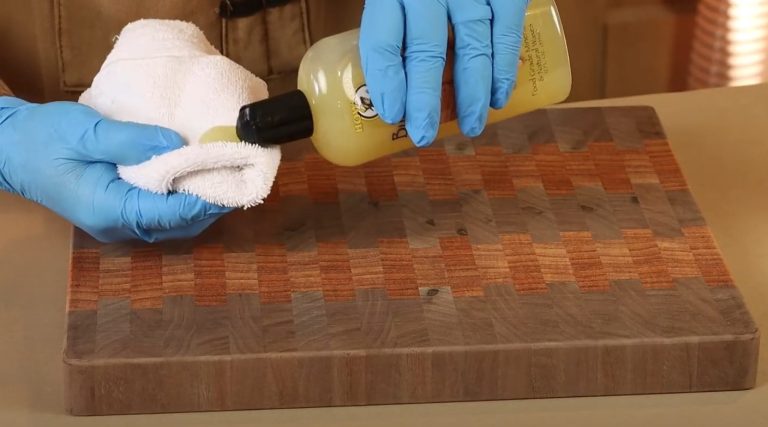Is Bamboo Good for Cutting Boards: Here’s Why!
Bamboo cutting boards are a great choice for your kitchen. They’re durable, eco-friendly, and have natural antibacterial properties that promote hygiene.
Unlike plastic, bamboo resists cracking and warping, and with proper care, it can last for years. Their lightweight design and beautiful grain make them a stylish addition to any countertop.
Plus, they’re budget-friendly compared to other materials. Want to know more about their benefits and maintenance? There’s plenty more to discover about bamboo.
Key Takeaways
- Bamboo cutting boards are eco-friendly, as bamboo is a rapidly renewable resource with minimal environmental impact.
- They possess natural antimicrobial properties, making them a hygienic choice for food preparation.
- Bamboo boards are durable and can outlast plastic options with proper care, resisting cracking and warping.
- Their aesthetic appeal and variety of designs enhance kitchen decor while being lightweight for easy handling.
- Bamboo cutting boards are budget-friendly and gentle on knife edges, contrary to common misconceptions.
Key Benefits of Bamboo Cutting Boards
Bamboo cutting boards offer an array of benefits that make them an excellent choice for any kitchen.
First and foremost, bamboo is a highly renewable resource, maturing in just 3-5 years, which contributes to its sustainability. It requires minimal environmental impact since it doesn’t need replanting after harvesting.
Additionally, bamboo absorbs more carbon dioxide and generates more oxygen than many other plants, enhancing air quality.
Its natural antimicrobial properties help reduce bacteria, while its low porosity limits moisture absorption, further promoting hygiene.
Easy to clean and resistant to stains, bamboo boards are practical for everyday use. Furthermore, bamboo is harder than most woods, which means it effectively resists knife scarring and damage.
Durability and Longevity of Bamboo
A bamboo cutting board is known for its impressive durability, often outlasting plastic options while typically not matching the longevity of hardwood boards.
With proper care, you can greatly extend its lifespan. Consider these factors:
- Bamboo resists cracking and warping better than many woods.
- Its density makes it tough, though it may dull knives quicker than softer woods.
- Regular oiling and cleaning help maintain the board’s condition.
- Avoid high heat, direct sunlight, and excessive moisture to prevent damage.
- Laminated boards may wear out faster than solid wood.
- Additionally, bamboo has natural antimicrobial properties, which help keep the board hygienic and suitable for food preparation.
Eco-Friendliness of Bamboo as a Material
When considering eco-friendliness, bamboo stands out as an exceptional material choice for cutting boards. Its rapid growth rate makes bamboo a highly renewable resource, self-regenerating without the need for replanting.
You’ll appreciate that bamboo requires minimal chemicals during growth, greatly reducing environmental impact compared to other crops. Sustainable harvesting practices further guarantee ecological balance. Additionally, bamboo is lightweight and strong, making it a knife friendly option for kitchen enthusiasts.
The manufacturing process is energy-efficient, often utilizing bamboo waste as fuel, which helps minimize carbon emissions. Plus, bamboo boards are biodegradable, compostable, and don’t persist in ecosystems like synthetic materials do.
Maintenance and Care for Bamboo Cutting Boards
Choosing bamboo for your cutting board not only supports eco-friendly practices but also requires a commitment to proper maintenance and care to guarantee longevity.
To keep your board in top shape, follow these essential tips:
- Hand wash with dish soap and hot water; avoid the dishwasher.
- Rinse thoroughly and dry upright to prevent warping. Additionally, make sure to disinfect the board after cutting raw meat or strong-smelling foods to ensure hygiene.
- Apply mineral or bamboo finishing oil monthly for moisture balance.
- Regularly inspect for wear and assess if sanding is needed.
- Store the board in a cool, dry place to maintain integrity.
Comparison to Other Cutting Board Materials
When comparing bamboo cutting boards to plastic and wood options, you’ll notice distinct advantages and disadvantages for each material. Bamboo stands out for its sustainability and durability, yet its hardness can dull your knives more quickly than wood.
Additionally, bamboo cutting boards are low maintenance, requiring minimal care to retain their shape and functionality over time. On the other hand, plastic boards offer superior sanitization, making them ideal for raw meat, while wood provides aesthetic appeal and longevity.
Bamboo vs. Plastic Boards
While both bamboo and plastic cutting boards have their unique advantages, the choice between them often boils down to durability, maintenance, and environmental impact.
Here’s a quick comparison:
- Durability: Bamboo typically lasts longer than plastic with proper care. Good wood cutting boards are known to withstand heavy knife use, and bamboo cutting boards exhibit similar durability.
- Maintenance: Bamboo requires hand washing and occasional oiling, while plastic is dishwasher safe.
- Environmental Impact: Bamboo is biodegradable, making it a more sustainable option than plastic.
- Antimicrobial Properties: Bamboo naturally resists bacteria, offering a cleaner surface.
- Cost: Bamboo boards are generally affordable, comparable to high-quality plastics.
Bamboo vs. Wood Boards
Bamboo and wood cutting boards each offer distinct benefits, making them popular choices in kitchens. Here’s a quick comparison to help you decide:
| Feature | Bamboo | Wood |
|---|---|---|
| Durability | Lasts 5-6 years | Can last decades |
| Knife Care | Dulls knives faster | Gentle on knife edges |
| Maintenance | Minimal, no dishwasher | Requires regular oiling |
| Environmental Impact | Highly renewable, biodegradable | Longer maturity, needs sustainable sourcing |
Bamboo boards are lightweight and eco-friendly, while wood boards provide durability and a classic aesthetic. Bamboo’s anti-microbial properties make it a safe choice for cutting various foods, enhancing its appeal in health-conscious kitchens.
Your choice depends on your cooking style and preference for maintenance versus longevity. Each material has its unique advantages worth considering.
Aesthetic Appeal of Bamboo Cutting Boards
Bamboo cutting boards enhance your kitchen’s decor with their elegant look and natural tones. Their versatile design fits seamlessly into various styles, from modern to rustic, making them a stylish choice for any home.
Plus, their sleek appearance adds a sophisticated touch while remaining functional for food preparation and serving. Additionally, their naturally anti-microbial properties help keep your kitchen safe from harmful bacteria.
Elegant Kitchen Decor
When it comes to elegant kitchen decor, a bamboo cutting board stands out as a stylish choice. Its natural aesthetics enhance your kitchen’s visual appeal, offering a modern touch.
Consider these features that contribute to its elegance:
- Light and Natural Colors: Bamboo’s soft tones blend seamlessly with various decor styles.
- Unique Grain Pattern: The distinct grain adds character and sophistication.
- Sleek Design: Lightweight and minimalist, it complements kitchen themes effortlessly. Additionally, its sustainable characteristics make it an eco-friendly choice that reflects your values.
- Visual Harmony: Its smooth surface fosters a cohesive look on countertops.
- Modern Visual Appeal: Bamboo boards elevate your kitchen’s overall aesthetic with contemporary charm.
Versatile Design Options
Cutting boards today come in a variety of designs, and bamboo options are particularly attractive due to their modern aesthetic. With neutral tones and sleek finishes, bamboo boards easily complement your kitchen decor.
Their versatility extends to size and function, as many are reversible, serving both cutting and serving purposes. Additionally, these boards are made with FSC®-certified 100% bamboo, ensuring a sustainable choice for eco-conscious consumers.
| Feature | Benefit | Appeal |
|---|---|---|
| Size Variety | Fits various kitchen needs | Adaptable for different tasks |
| Stylish Finish | Enhances countertop aesthetics | Visually pleasing addition |
| Handcrafted Options | Unique, eco-friendly charm | Supports artisan craftsmanship |
Practical Uses of Bamboo in the Kitchen
In any kitchen, a versatile cutting board can make all the difference in food preparation and presentation.
Bamboo boards shine in multiple roles, enhancing your culinary experience. Here’s how you can practically use bamboo in your kitchen:
- Chopping and Cutting: Perfect for a variety of foods, from vegetables to meats.
- Baking: Provides a smooth surface for rolling out dough or kneading. Bamboo’s density helps resist knife scarring, contributing to a durable surface.
- Presentation: Adds natural elegance when serving dishes.
- Durability: Withstands repeated use without compromising quality.
- Easy Cleaning: Simply wash with soap and water, ensuring hygiene.
Addressing Common Myths About Bamboo
What makes bamboo cutting boards a topic of debate among culinary enthusiasts? Many believe myths surrounding their safety, durability, and aesthetics.
First, bamboo’s sanitary properties actually surpass those of plastic; its natural antimicrobial features inhibit bacterial growth. In addition, bamboo isn’t as harsh on knives as some think; it offers a gentle surface that preserves blade edges.
Furthermore, bamboo boards are known for their superior resistance to bacteria, which makes them a safer choice for food preparation.
Bamboo cutting boards excel in sanitation and knife preservation, offering a gentle surface that inhibits bacterial growth.
Durability is another misconception bamboo boards can last decades with proper care, resisting cracking and warping. Eco-friendliness also comes into play; bamboo is a rapidly renewable resource, making it a sustainable option.
Making the Right Choice for Your Kitchen
How do you determine which cutting board is right for your kitchen?
When choosing, consider factors that align with your cooking habits and sustainability goals.
Here are some key characteristics of bamboo cutting boards to think about:
- Durability: Highly resistant to scratches and dents.
- Sustainability: A renewable resource that’s eco-friendly.
- Antibacterial Properties: Natural defenses against contamination.
- Lightweight: Easier to handle and store than hardwood.
- Affordability: Generally more budget-friendly than other materials.
Frequently Asked Questions
Can Bamboo Cutting Boards Warp in High Humidity Environments?
Yes, bamboo cutting boards can warp in high humidity environments if not properly maintained.
Their porous nature makes them susceptible to moisture absorption. To prevent warping, make sure you dry the board thoroughly after washing and store it in a well-ventilated area.
Regularly oil the board to seal its pores and enhance its durability. By following these practices, you can maintain the integrity of your bamboo cutting board even in humid conditions.
Are There Any Allergens Associated With Bamboo Cutting Boards?
You’d think bamboo cutting boards might trigger allergies, right? Surprisingly, they don’t.
Bamboo itself isn’t linked to common allergens, and the processed boards lack specific allergenic properties.
However, to guarantee safety, you should clean and sanitize your bamboo boards regularly. This practice minimizes any potential allergen or pathogen transfer.
How Do Bamboo Cutting Boards Compare in Weight to Plastic Boards?
When comparing bamboo cutting boards to plastic boards, you’ll find that both are lightweight and easy to handle.
Bamboo boards are slightly denser than plastic but still maintain a low weight, making them portable. The weight can vary depending on size and thickness, but generally, you’ll appreciate the balance of durability and lightness in bamboo, which offers a solid alternative to plastic without compromising on ease of use.
Can Bamboo Cutting Boards Be Used for Raw Meat?
Yes, you can use bamboo cutting boards for raw meat, but you need to be cautious.
Make sure to clean and sanitize the board thoroughly after each use to prevent cross-contamination. Bamboo has natural antimicrobial properties, but they shouldn’t replace proper hygiene practices.
It’s also wise to use separate boards for raw meat and other foods to minimize risks. Regular maintenance is essential to keep your bamboo board safe and in good condition.
Do Bamboo Cutting Boards Retain Odors From Strong-Smelling Foods?
Did you know that bamboo cutting boards are less likely to retain odors than traditional wooden boards, thanks to their moisture-resistant properties?
When you use a bamboo board, you’ll find it doesn’t absorb strong smells from foods like garlic or fish as easily. This means you can enjoy cooking without worrying about lingering odors.
Just remember to clean and maintain it properly, and your bamboo board will stay fresh and ready for use!
A Smart, Stylish and Sustainable Choice for Your Kitchen
To sum it up, bamboo cutting boards are like the Swiss Army knives of kitchen tools versatile, durable, and eco-friendly.
They offer a perfect blend of functionality and style, making them a smart choice for any home chef. With proper care, they can last for years while being gentle on your knives.
By choosing bamboo, you’re not just investing in a cutting board; you’re making a sustainable choice for your kitchen and the planet.

